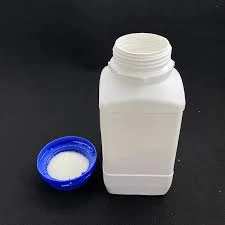Functional Fillers for Plastics Enhancing Performance and Sustainability
Plastics have become an integral part of modern life, finding applications in various industries, including packaging, automotive, construction, and consumer goods. While the versatility of plastics is often attributed to their intrinsic properties, the incorporation of functional fillers has significantly enhanced their performance, sustainability, and economic viability. This article explores the different types of functional fillers used in plastics, their benefits, and future trends in this dynamic field.
Understanding Functional Fillers
Functional fillers are materials added to plastic formulations to improve specific properties, including mechanical strength, thermal stability, electrical conductivity, and barrier resistance, without substantially affecting the base polymer's characteristics. Unlike traditional fillers, which primarily serve to reduce costs, functional fillers provide enhanced functionalities, broadening the application range of plastics.
There are several categories of functional fillers, including mineral fillers, glass fibers, organic fillers, and nanofillers. Each type offers unique advantages depending on the desired properties of the final plastic product.
Types of Functional Fillers
1. Mineral Fillers Commonly used mineral fillers include calcium carbonate, talc, and clay. These materials improve stiffness, impact resistance, and dimensional stability. For example, talc-filled polypropylene is widely used in automotive parts due to its excellent rigidity and reduced weight.
2. Glass Fibers Glass fibers are employed primarily to enhance the tensile strength of plastics. They are particularly effective in engineering thermoplastics, such as nylon and polyester. The reinforcement provides improved mechanical performance, making it suitable for demanding applications like structural components in the automotive and aerospace industries.
3. Organic Fillers These include natural fibers derived from sources like wood, jute, and hemp. They offer a lightweight alternative to traditional fillers and contribute to sustainability by reducing reliance on fossil fuels. Natural fiber-reinforced plastics are gaining popularity in the development of biodegradable composites for environmentally friendly packaging.
4. Nanofillers Nanoscale fillers, such as carbon nanotubes and graphene, have emerged as revolutionary materials in the plastics industry. Their exceptional strength-to-weight ratio and outstanding electrical conductivity open up new possibilities for advanced applications, including conductive plastics for electronic devices and high-strength composites for aerospace applications.
functional fillers for plastics

Benefits of Functional Fillers
The addition of functional fillers into plastic formulations is not merely about performance enhancement. It can also lead to significant cost savings and environmental benefits. These materials can
- Improve Mechanical Properties Fillers enhance the strength, toughness, and durability of plastics, making them more resilient under stress and less prone to deformation. - Increase Thermal Stability Certain fillers can tolerate higher temperatures, broadening the range of processing conditions and end-use applications for plastics.
- Enhance Barrier Properties Functional fillers can provide better moisture and gas barrier properties, essential for food packaging and medical applications.
- Facilitate Recycling Some fillers, particularly natural ones, can improve the recyclability of plastics and support the development of circular economy practices.
- Reduce Environmental Impact By using renewable or easily sourced materials as fillers, manufacturers can decrease their carbon footprint and align with sustainability goals.
Future Trends
As the industry advances, the use of functional fillers in plastics will likely evolve. Researchers are exploring innovative fillers that not only enhance performance but also provide additional benefits, such as self-healing properties and antimicrobial effects. Furthermore, the rise of bioplastics presents new opportunities for integrating natural and sustainable fillers, paving the way for environmentally friendly alternatives to conventional plastics.
In conclusion, functional fillers play a crucial role in the development of high-performance plastics. They offer a pathway to enhance the mechanical, thermal, and barrier properties of plastics while promoting sustainability and cost-effectiveness. As technology progresses, the continued innovation and application of functional fillers will shape the future of the plastic industry, driving the creation of materials that meet the demands of an ever-evolving marketplace and environmental landscape.

